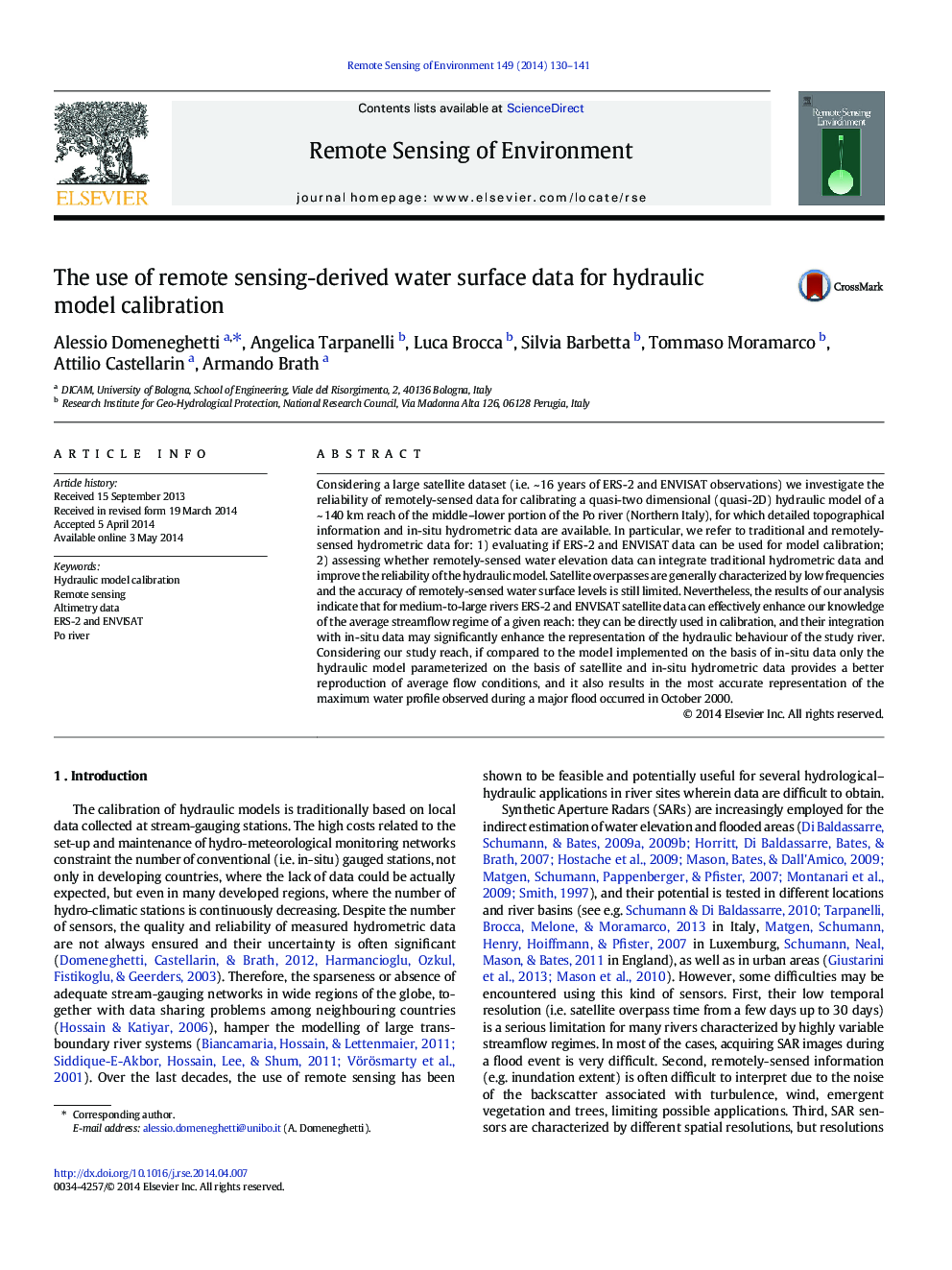| کد مقاله | کد نشریه | سال انتشار | مقاله انگلیسی | نسخه تمام متن |
|---|---|---|---|---|
| 6346760 | 1621251 | 2014 | 12 صفحه PDF | دانلود رایگان |
- We implement a quasi-2D hydraulic model for ~Â 140Â km of the Po River (Italy).
- We use in-situ hydrometric data and remotely-sensed data for the model calibration.
- Satellite dataset can describe the hydrometric regime for a given river reach.
- ENVISAT and ERS-2 data can integrate in-situ observations for model calibration.
Considering a large satellite dataset (i.e. ~Â 16Â years of ERS-2 and ENVISAT observations) we investigate the reliability of remotely-sensed data for calibrating a quasi-two dimensional (quasi-2D) hydraulic model of a ~Â 140Â km reach of the middle-lower portion of the Po river (Northern Italy), for which detailed topographical information and in-situ hydrometric data are available. In particular, we refer to traditional and remotely-sensed hydrometric data for: 1) evaluating if ERS-2 and ENVISAT data can be used for model calibration; 2) assessing whether remotely-sensed water elevation data can integrate traditional hydrometric data and improve the reliability of the hydraulic model. Satellite overpasses are generally characterized by low frequencies and the accuracy of remotely-sensed water surface levels is still limited. Nevertheless, the results of our analysis indicate that for medium-to-large rivers ERS-2 and ENVISAT satellite data can effectively enhance our knowledge of the average streamflow regime of a given reach: they can be directly used in calibration, and their integration with in-situ data may significantly enhance the representation of the hydraulic behaviour of the study river. Considering our study reach, if compared to the model implemented on the basis of in-situ data only the hydraulic model parameterized on the basis of satellite and in-situ hydrometric data provides a better reproduction of average flow conditions, and it also results in the most accurate representation of the maximum water profile observed during a major flood occurred in October 2000.
Journal: Remote Sensing of Environment - Volume 149, June 2014, Pages 130-141
